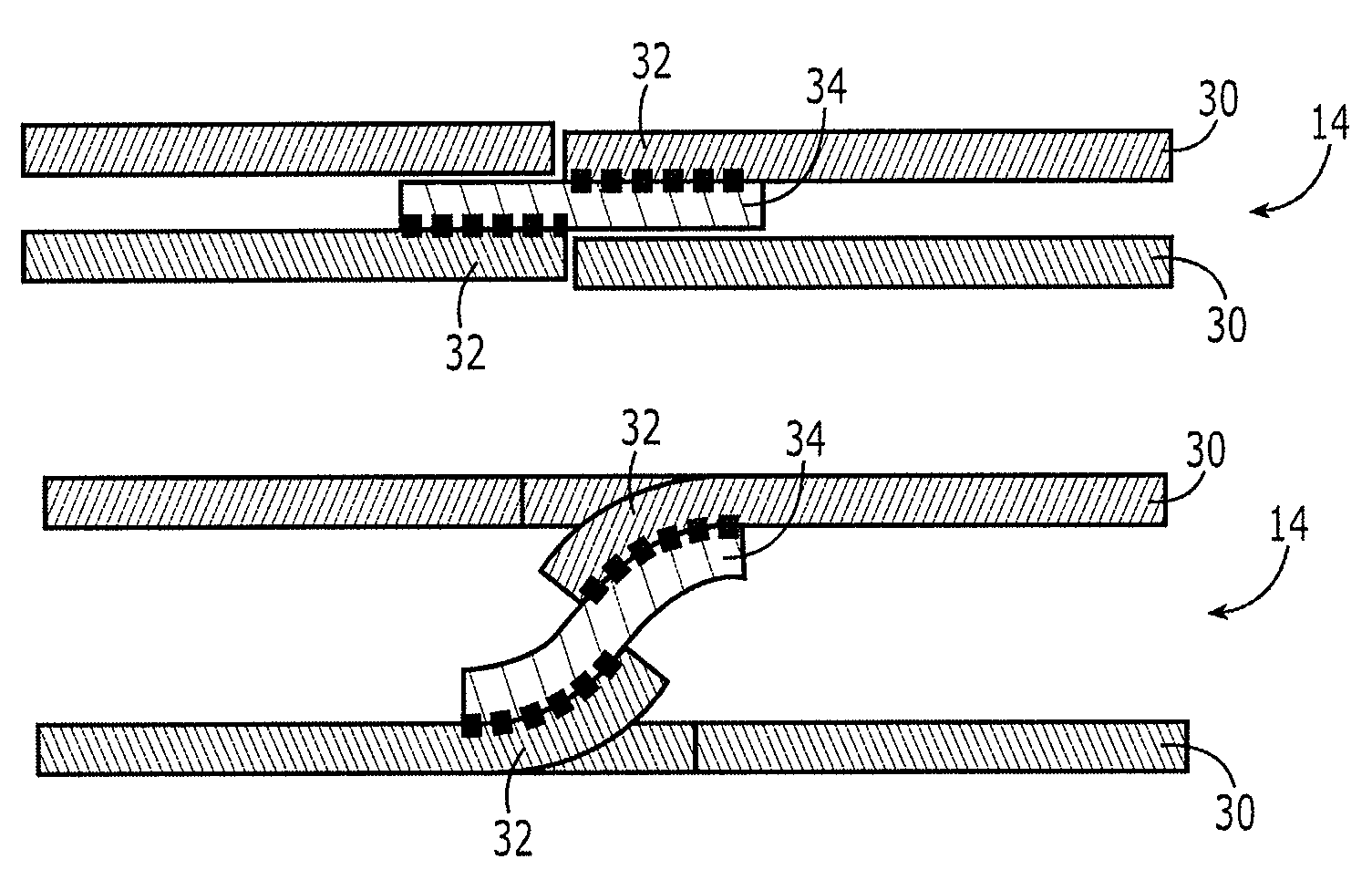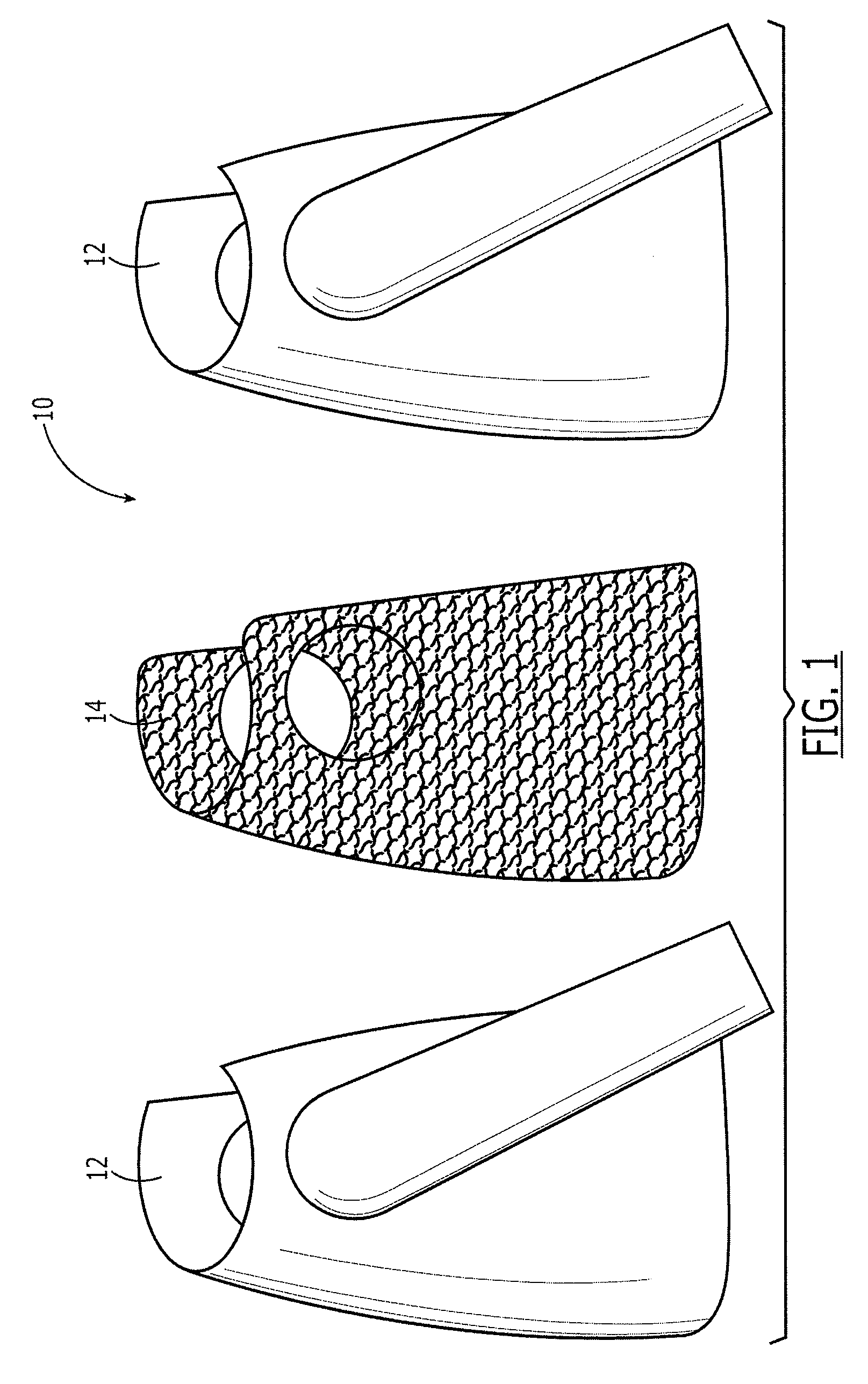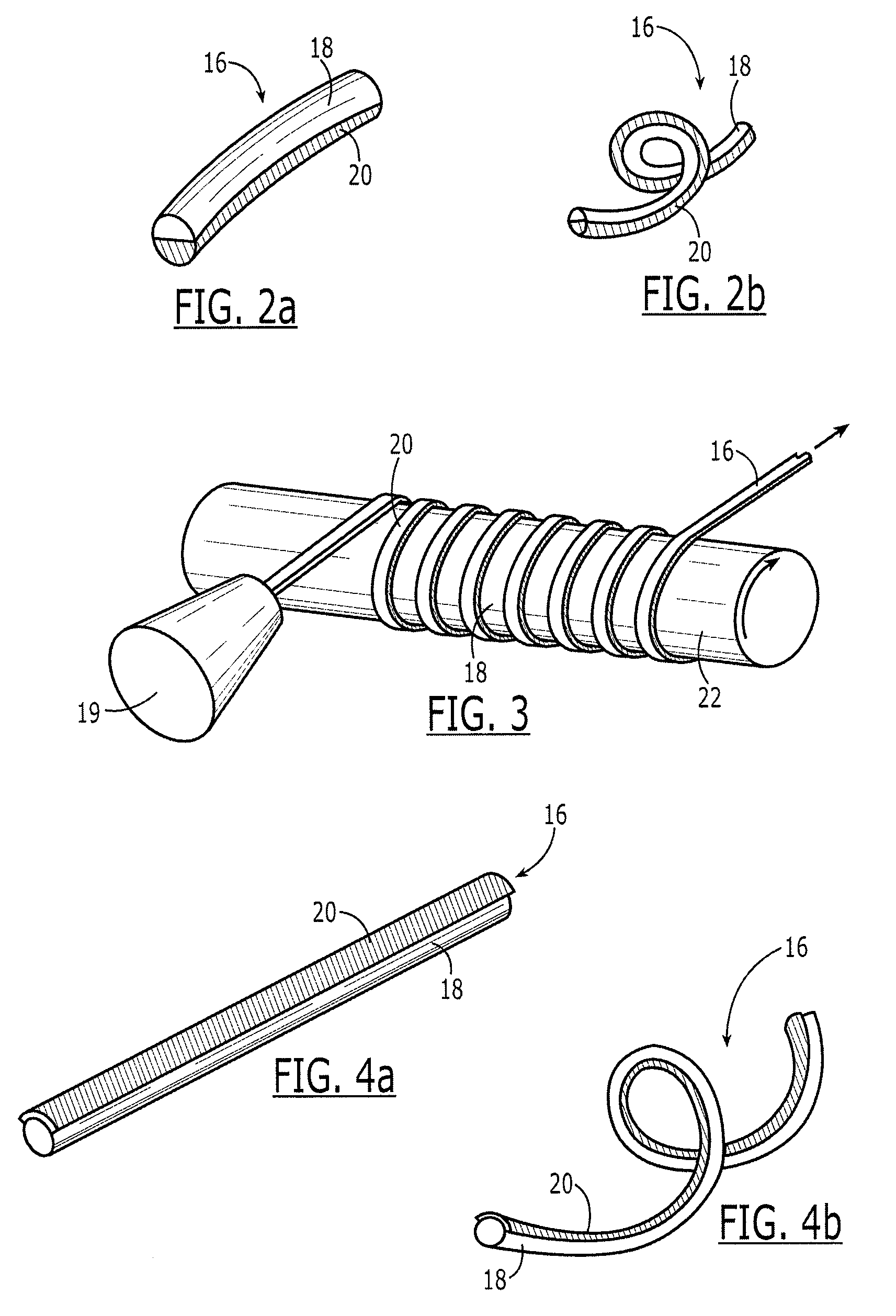Insulative material and associated method of forming same
a technology of insulation materials and associated methods, applied in the field of insulation materials, can solve the problems of changing the metabolic rate of wearers, unsuitable or unnecessary insulation, and changing the load of radiant hea
- Summary
- Abstract
- Description
- Claims
- Application Information
AI Technical Summary
Benefits of technology
Problems solved by technology
Method used
Image
Examples
Embodiment Construction
[0029]The present inventions now will be described more fully hereinafter with reference to the accompanying drawings, in which some, but not all embodiments of the inventions are shown. Indeed, these inventions may be embodied in many different forms and should not be construed as limited to the embodiments set forth herein; rather, these embodiments are provided so that this disclosure will satisfy applicable legal requirements. Like numbers refer to like elements throughout.
[0030]Referring now to FIG. 1, an article of clothing 10 fabricated in accordance with embodiments of the present invention is depicted. Although the article of clothing is shown to be a jacket, a wide variety of other articles of clothing can be fabricated in accordance with embodiments of the present invention. Additionally, while the insulative material of embodiments of the present invention will generally be described in conjunction with the fabrication of an article of clothing, the insulative material m...
PUM
| Property | Measurement | Unit |
|---|---|---|
| coefficients of thermal expansion | aaaaa | aaaaa |
| temperature | aaaaa | aaaaa |
| shape | aaaaa | aaaaa |
Abstract
Description
Claims
Application Information
 Login to View More
Login to View More - R&D
- Intellectual Property
- Life Sciences
- Materials
- Tech Scout
- Unparalleled Data Quality
- Higher Quality Content
- 60% Fewer Hallucinations
Browse by: Latest US Patents, China's latest patents, Technical Efficacy Thesaurus, Application Domain, Technology Topic, Popular Technical Reports.
© 2025 PatSnap. All rights reserved.Legal|Privacy policy|Modern Slavery Act Transparency Statement|Sitemap|About US| Contact US: help@patsnap.com



